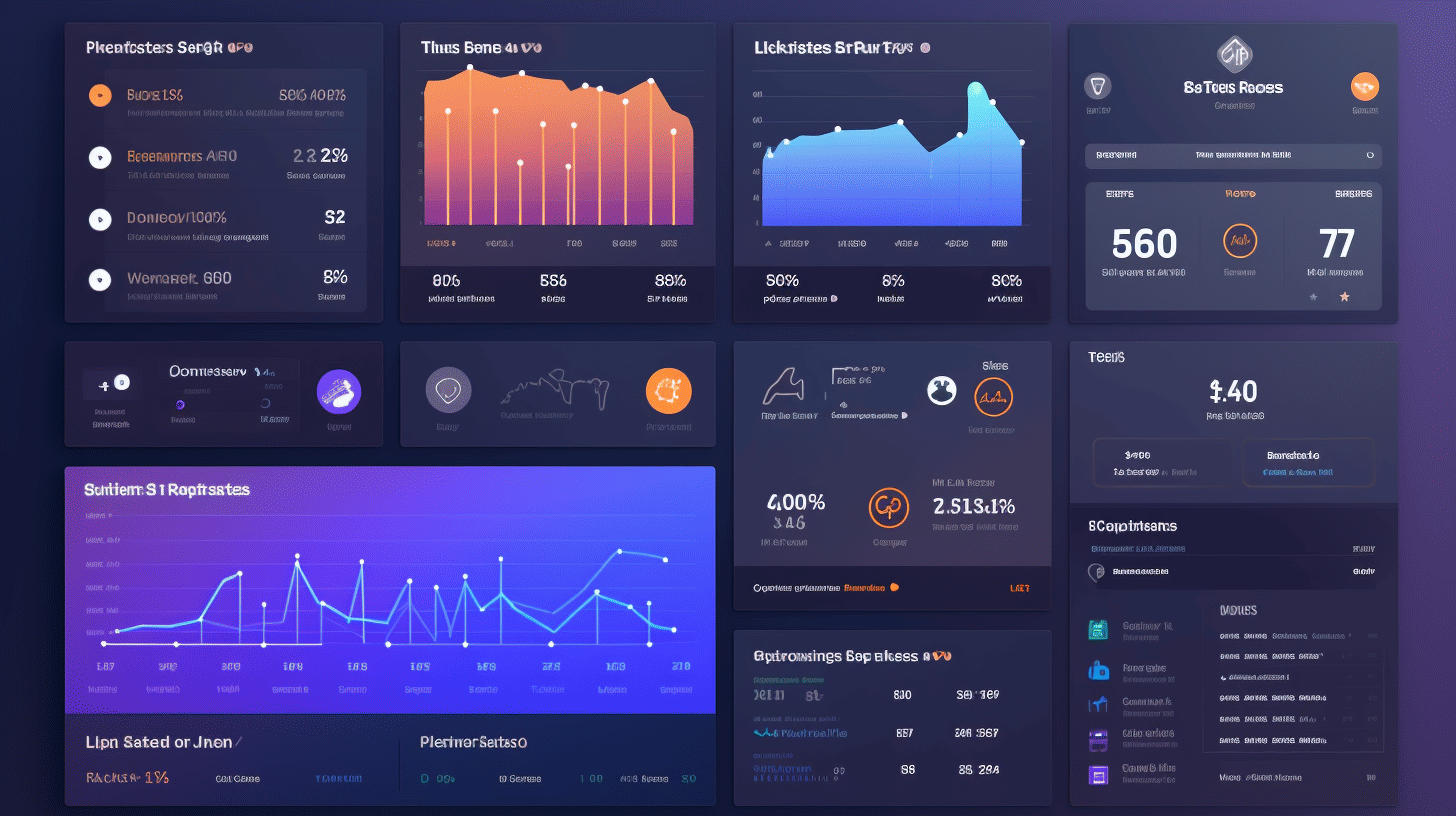在快节奏的数字世界中,网站是企业和个人品牌的支柱,网站备份和恢复的重要性不容小觑。想象一下,你花费无数时间制作引人入胜的内容,优化网站以适应搜索引擎,并培养忠诚的受众,却因为技术故障或恶意攻击而失去一切。这是任何网站所有者都不想经历的噩梦。
在本文中,我们将探讨网站备份和恢复的基本步骤,特别是针对 WordPress 用户。无论您是个人博主、电子商务店主还是希望建立强大在线形象的小型企业,了解如何保护和恢复您的网站都至关重要。
但为什么网站备份和恢复如此重要?让我们深入探讨这个过程的重要性,并探索它给网站所有者带来的好处。
网站备份和恢复的重要性
在当今的数字时代,网站是企业和个人的命脉,网站备份和恢复的需求不容小觑。网站不仅仅是一个虚拟店面;它还是客户互动、潜在客户开发和创收的中心。任何数据中断或丢失都可能对声誉和利润造成毁灭性后果。
预防数据丢失
想象一下,您花费了无数个小时来设计和策划网站内容,但有一天醒来发现所有内容都消失了。无论是由于技术故障、黑客事件还是网站崩溃,宝贵数据的丢失都可能是灾难性的。这就是网站备份和恢复发挥作用的地方。通过定期备份您的网站,您可以确保您拥有所有文件、数据库和配置的最新副本。如果发生任何数据丢失,您可以快速将网站恢复到以前的状态,从而避免从头开始。
但网站备份并非一次性的事情;它需要定期更新以纳入最新的更改和添加。自动备份解决方案通过自动检测和备份对您网站所做的任何更改来提供便利,确保您的数据始终是最新的。有了可靠的备份系统,您可以放心,您的辛勤工作和宝贵信息是安全的,并且可以轻松恢复。
降低网站黑客攻击的风险
黑客攻击是当今数字环境中的持续威胁。网络犯罪分子不断设计新方法来利用网站漏洞、窃取敏感数据并破坏在线平台。但是,通过强大的网站备份和恢复策略,您可以减轻与网站黑客攻击相关的风险。方法如下:
- 快速恢复:如果不幸发生网站黑客攻击事件,备份可以让您迅速将网站恢复到黑客攻击之前的状态,最大限度地减少停机时间并阻止进一步的损害。
- 隔离备份:通过创建存储在安全位置的单独备份,您可以防止黑客访问您的备份文件。这可确保即使您的实时网站受到威胁,您的备份仍保持完整。
- 保留政策:备份解决方案通常提供保留策略,允许您存储网站的多个版本。如果黑客长时间未被发现,这尤其有用。通过安全存储网站的先前版本,您可以恢复到干净状态而不会丢失宝贵的数据。
轻松切换服务器
在服务器切换时,网站备份和恢复也起着至关重要的作用。有时,企业可能需要更换托管服务提供商或升级到性能更高的服务器。在这些情况下,网站备份和恢复可以通过以下方式简化过渡过程:
- 无缝迁移:通过备份,您可以轻松地将您的网站迁移到新服务器,而不必担心数据丢失或服务中断。
- 测试目的:在进行任何服务器切换之前,在新环境中测试网站的功能和性能至关重要。通过使用备份创建临时网站,您可以确保在上线之前一切顺利运行。
总之,网站备份和恢复对于任何拥有网站的人来说都是必不可少的做法。通过实施可靠的备份系统,您可以防止数据丢失、防止黑客攻击并促进服务器切换。不要等到为时已晚;投资网站备份和恢复以保护您的在线状态并保持您的企业或个人网站的连续性。
了解网站备份的基础知识
🔒 什么是网站备份?
在当今的数字时代,网站已成为企业、组织和个人的重要组成部分。它们是品牌的门面、信息中心和在线交易的门户。由于事关重大,保护您的网站免受数据丢失、黑客攻击或服务器故障等潜在灾难的影响至关重要。这就是网站备份发挥作用的地方。
网站备份是指在单独的位置创建和存储网站数据、文件和数据库的副本的过程。这些备份可充当安全网,让您可以在发生问题时将网站恢复到以前的状态。这就像为您宝贵的在线形象投保一样。
🗃️ 不同类型的网站备份
并非所有网站备份都一样。有多种备份方法和类型可供选择,每种方法和类型都有各自的优点和注意事项。一些常见的网站备份类型包括:
- 完整备份:此类备份会创建整个网站的完整副本,包括所有文件、数据库和配置。完整备份很全面,但备份量可能较大,恢复时间也更长。
- 增量备份:增量备份仅保存自上次备份以来所做的更改。此方法效率更高,占用的存储空间和执行时间更少。但是,从增量备份恢复网站可能会稍微复杂一些。
- 计划备份:使用计划备份,您可以设置自动备份的具体日期和时间。这可确保定期备份您的网站,而无需人工干预。
💡 您应该多久备份一次您的网站?
备份网站不是一次性任务;它是一项持续性实践,应成为您定期网站维护工作的一部分。备份频率取决于各种因素,例如您拥有的内容类型、内容更改频率以及网站的重要性。以下是一些需要考虑的一般准则:
- 关键内容:如果您拥有重要内容或经常更新网站,则必须更频繁地备份以最大限度地降低数据丢失的风险。在这些情况下,建议每天或每周备份一次。
- 更新频率较低的内容:对于内容变化不频繁的网站,例如静态网站或博客,每周或每月备份可能就足够了。
- 电子商务和交易网站:如果您的网站涉及在线交易,则必须更频繁地备份以保护客户数据。对于此类网站,通常建议每日备份。
请记住,备份网站并不是一项设置好后就忘掉的任务。定期监控备份过程、测试备份的完整性以及随着网站的发展更新备份策略至关重要。
通过投入时间和精力进行网站备份,您可以保护您的在线形象,并确保您的网站能够从任何不可预见的事件中恢复过来。请记住,在网站灾难方面,预防总是比恢复更好。
🔑 关键要点
- 网站备份是在单独的位置创建网站数据、文件和数据库的副本以进行保护的过程。
- 不同类型的备份包括完整备份、增量备份和计划备份。
- 备份的频率取决于内容类型和网站的关键性等因素。
- 根据您网站的内容和活动,通常进行每日、每周或每月备份。
如何备份你的 WordPress 网站
🔐 确保网站的安全至关重要。您可以采取的最重要措施之一是定期备份您的 WordPress 网站。这种做法不仅可以保护您宝贵的数据,还可以在发生黑客攻击、服务器崩溃或用户错误等不可预见的事件时提供安全网。
手动备份
✍️ 备份 WordPress 网站的一种方法是手动下载所有文件和数据库。这听起来可能很艰巨,但这是一个简单的过程,让您可以完全控制备份。您可以按照以下方法操作:
- 文件备份:通过 FTP(文件传输协议)访问您的 Web 服务器并下载构成 WordPress 网站的所有文件。其中包括主题、插件和上传的媒体等文件。
- 数据库备份:登录托管服务提供商的控制面板并访问 phpMyAdmin(管理 WordPress 数据库的工具)。从那里,选择您的 WordPress 数据库并将其导出到本地文件。此文件包含存储在您网站数据库中的所有重要信息,包括帖子、页面、评论和用户详细信息。
⚠️ 记住:定期执行这些手动备份,最好在单独的存储设备或云平台上进行,以最大限度地降低数据丢失的风险。
使用 WordPress 插件
💡 值得庆幸的是,WordPress 提供了各种插件来简化备份过程。这些插件可自动执行备份过程并提供附加功能以更轻松地恢复。以下是一些流行的备份插件:
- UpdraftPlus:UpdraftPlus 拥有超过 200 万个活跃安装,可让您安排自动备份并将其存储在 Dropbox、Google Drive 和 Amazon S3 等云平台上。
- VaultPress:VaultPress 由 WordPress.com 背后的公司 Automattic 开发,提供实时备份、自动恢复和安全扫描。它与 WordPress 仪表板无缝集成,让您轻松管理备份。
- 备份伙伴:这款全面的备份插件允许您安排备份、将其存储在云中,甚至将您的网站迁移到新服务器。它还提供自定义备份中包含哪些文件和数据库的选项。
🛡️ 请记住选择信誉良好、评价良好且经常更新的备份插件,以确保与最新的 WordPress 版本兼容。
使用网站托管服务
🌐 许多网络托管服务提供商将备份服务作为其托管套餐的一部分。这些服务会自动备份您的 WordPress 网站并将备份存储在他们的服务器上。以下是一些提供备份服务的知名托管服务提供商:
- Bluehost:Bluehost 在其托管计划中包含免费的每日备份,让您只需单击即可恢复您的网站。
- SiteGround:SiteGround 为客户提供每日自动备份,可随时保留您网站的最多 30 个副本。他们提供简单的恢复功能,甚至允许您将备份下载到本地设备。
- WP 引擎:WP Engine 以其托管的 WordPress 主机而闻名,其计划包括自动每日备份。他们还提供按需备份和简单的一键恢复选项。
🔄 无论选择哪种方法,备份 WordPress 网站都是维护其完整性和保护您的辛勤工作的必要步骤。请记住创建备份计划,安全存储备份,并定期测试恢复过程以确保一切正常。
🔒 不要等到为时已晚——立即采取必要措施,实施可靠的备份策略来保护您的网站!
恢复您的 WordPress 网站
您是否曾经历过惊慌失措的时刻,意识到您的 WordPress 网站已关闭或受到攻击?这是许多网站所有者在某个时候都面临的具有挑战性的情况。但不要害怕!通过正确的步骤和故障排除技术,您可以恢复您的 WordPress 网站并使其恢复正常运行。在本文中,我们将指导您完成恢复 WordPress 网站的过程并提供常见恢复问题的解决方案。让我们开始吧!
恢复过程中应遵循的步骤
恢复 WordPress 网站可能是一项艰巨的任务,但通过遵循系统化的方法,您可以使该过程更顺畅、更有效。以下是恢复 WordPress 网站应采取的步骤:
- 评估问题:第一步是确定并了解问题。您的网站是否完全瘫痪,还是有特定区域受到影响?是技术问题还是安全漏洞?评估问题将帮助您缩小潜在原因的范围并确定适当的行动方案。
- 检查服务器状态:如果您的网站完全瘫痪,请务必检查服务器的状态。访问您的托管服务提供商的网站或联系其支持团队,以了解是否存在可能影响您网站的服务器范围的问题。
- 从备份还原:如果您定期备份 WordPress 网站(您应该这样做!),您可以从以前的备份中恢复您的网站。大多数托管服务提供商通过其控制面板提供备份和恢复选项,或为此提供插件。
- 扫描恶意软件:如果您的网站遭到入侵,您需要扫描恶意软件和恶意代码。使用信誉良好的安全插件(如 Sucuri 或 Wordfence)彻底扫描您的网站。这些插件将帮助您识别和删除可能导致问题的任何恶意文件或代码。
- 更新 WordPress 核心和插件:过时的 WordPress 核心文件和插件可能会使您的网站容易受到安全漏洞和技术故障的影响。确保将 WordPress 核心文件和所有已安装的插件都更新到最新版本。此步骤将有助于确保您的网站的稳定性和安全性。
- 仔细检查主题兼容性:有时,编码不当或过时的主题可能会导致您的 WordPress 网站出现问题。请切换到默认的 WordPress 主题(例如 Twenty Twenty-One),检查主题兼容性。如果使用其他主题时问题得到解决,则您可能需要更新或替换当前主题。
- 寻求专业帮助:如果您已遵循上述所有步骤,但 WordPress 网站仍然出现问题,则可能需要寻求专业帮助。请联系值得信赖的 WordPress 开发人员或支持服务以获取进一步的帮助和指导。
解决常见恢复问题
恢复 WordPress 网站时,您可能会遇到一些需要额外故障排除的常见问题。以下是一些常见的恢复问题及其可能的解决方案:
- 死机白屏:如果您的网站显示空白屏幕(称为“死机白屏”),这通常是由 PHP 错误引起的。要诊断此问题,您可以通过将以下代码添加到 wp-config.php 文件来启用 WordPress 调试:
定义('WP_DEBUG', true );定义('WP_DEBUG_LOG', true );定义('WP_DEBUG_DISPLAY', false );
这将在您的 wp-content 目录中创建一个 debug.log 文件,其中将包含错误消息并帮助查明问题的原因。
- 建立数据库连接时出错:此错误消息通常出现在您网站数据库连接出现问题时。请检查 wp-config.php 文件中的数据库凭据,确保它们正确无误。如果问题仍然存在,请联系您的托管服务提供商,确保您的数据库服务器正常运行。
- 网站无响应或运行缓慢:网站速度缓慢或无响应可能是由多种因素造成的,包括插件过多、主题繁重或服务器问题。首先停用不必要的插件并切换到轻量级主题,看看是否能提高性能。如果问题仍然存在,请联系您的托管服务提供商以检查是否存在与服务器相关的问题。
请记住,恢复 WordPress 网站需要耐心和仔细的故障排除。通过遵循上述步骤并解决常见的恢复问题,您将能够更好地恢复您的网站并确保其顺利运行。祝你好运!
WordPress 备份和恢复的最佳实践
备份 WordPress 网站就像为您的在线状态投保。它可以确保您在出现任何问题时拥有网站数据的副本,让您能够快速轻松地恢复。然而,这不仅仅是创建备份;它还涉及遵循最佳实践以确保其有效性。在本节中,我们将探讨一些 WordPress 备份和恢复的基本技巧,以保护您的网站。
1.定期安排自动备份
WordPress 备份和恢复最重要的最佳实践之一是建立定期备份计划。这可确保您的网站内容、主题、插件和数据库得到一致备份。通过自动化该过程,您可以放心,因为您知道无需人工干预即可创建定期备份。
2. 选择可靠的备份解决方案
WordPress 有多种备份插件和服务,但并非所有插件和服务都一样。选择可靠且信誉良好的备份解决方案以满足您的特定需求至关重要。寻找增量备份、异地存储选项和简单的恢复过程等功能。
3. 将备份存储在异地
将备份存储在托管网站的同一台服务器上是有风险的。如果服务器出现问题,您将同时丢失网站和备份。相反,请选择异地存储解决方案,例如云服务或外部服务器。这提供了额外的安全保障,并确保即使您的网站发生灾难性故障,您的备份也是安全的。
4.定期测试备份
仅创建备份是不够的;您需要确保它们可以正常工作并且可以成功恢复。定期测试您的备份可确保它们没有损坏或不完整。最好在测试期间发现备份存在的问题,而不是在遇到危机时才发现。
5.多个版本的备份
拥有多个版本的备份可让您在需要时回到过去并将网站恢复到特定时间点。如果您不小心删除了重要信息或您的网站受到攻击,这将非常有用。通过拥有多个备份点,您在恢复选项方面拥有更大的灵活性。
“定期备份你的网站就像是家里有一把备用钥匙一样——有备用计划总是好的。” – 未知
通过遵循这些 WordPress 备份和恢复最佳实践,您可以确保您的网站保持安全、可靠且易于恢复。请记住,对于潜在的网站灾难,预防胜于治疗。因此,花点时间实施强大的备份策略,并放心地知道您的在线状态得到了很好的保护。
结论
总之,网站备份和恢复是管理和保护 WordPress 网站的重要方面。通过定期备份网站,您可以防止宝贵的数据丢失、降低黑客攻击的风险,并确保切换服务器时顺利过渡。
说到备份,有多种方法可供选择,包括手动备份、使用 WordPress 插件或利用网络托管服务。选择最适合您需求和偏好的方法。
如果您不幸需要恢复 WordPress 网站,遵循正确的步骤并排除任何问题可以帮助您快速恢复正常运行。请记住保持冷静并依靠您的备份将您的网站恢复到以前的状态。
为确保 WordPress 备份和恢复的最佳实践,请考虑以下提示:
- 定期安排备份以最大限度地降低数据丢失的风险。
- 将备份存储在安全的异地位置以增加保护。
- 定期测试您的备份以确保其完整性。
- 保持您的网站和插件为最新版本,以防止安全漏洞。
- 实施强密码和安全措施来阻止黑客。
总体而言,优先考虑网站备份和恢复对于 WordPress 网站的长期成功和安全至关重要。通过投资可靠的托管 WordPress 托管平台(如 Managed-WP),您可以简化备份过程,并放心地知道您的网站得到了妥善的管理。
因此,请立即采取必要措施保护您的网站,并探索 Managed-WP 高级托管 WordPress 云托管平台的优势。
托管WP – 使用 Managed-WP 全面托管的 WordPress 托管解决方案简化您的网站备份和恢复。
常见问题
- 为什么网站备份和恢复对 WordPress 用户很重要?
网站备份和恢复对于 WordPress 用户来说非常重要,因为它有助于保护他们的网站免受意外、黑客攻击、服务器故障或其他不可预见事件造成的数据丢失。它提供了一种快速轻松地恢复网站的方法。
- WordPress 网站备份和恢复的必要步骤是什么?
WordPress 中网站备份和恢复的基本步骤包括选择可靠的备份插件、安排定期备份、将备份存储在安全的位置(异地或云存储)、测试备份的完整性以及制定恢复计划。
- 推荐 WordPress 用户使用哪些备份插件?
对于 WordPress 用户来说,一些流行且强烈推荐的备份插件是 UpdraftPlus、BackupBuddy 和 VaultPress。这些插件提供简单的设置、自动备份和无缝恢复选项。
- 我应该多久备份一次我的 WordPress 网站?
建议每周至少备份一次 WordPress 网站。不过,备份频率可能因更新或添加新内容的频率而异。更新频率较高的网站应考虑更频繁地备份。
- 我的 WordPress 网站备份中应该包含什么?
在您的 WordPress 网站备份中,您应该包括所有网站文件(主题、插件、图像等)、WordPress 数据库以及对您网站功能至关重要的任何其他文件或自定义配置。



















